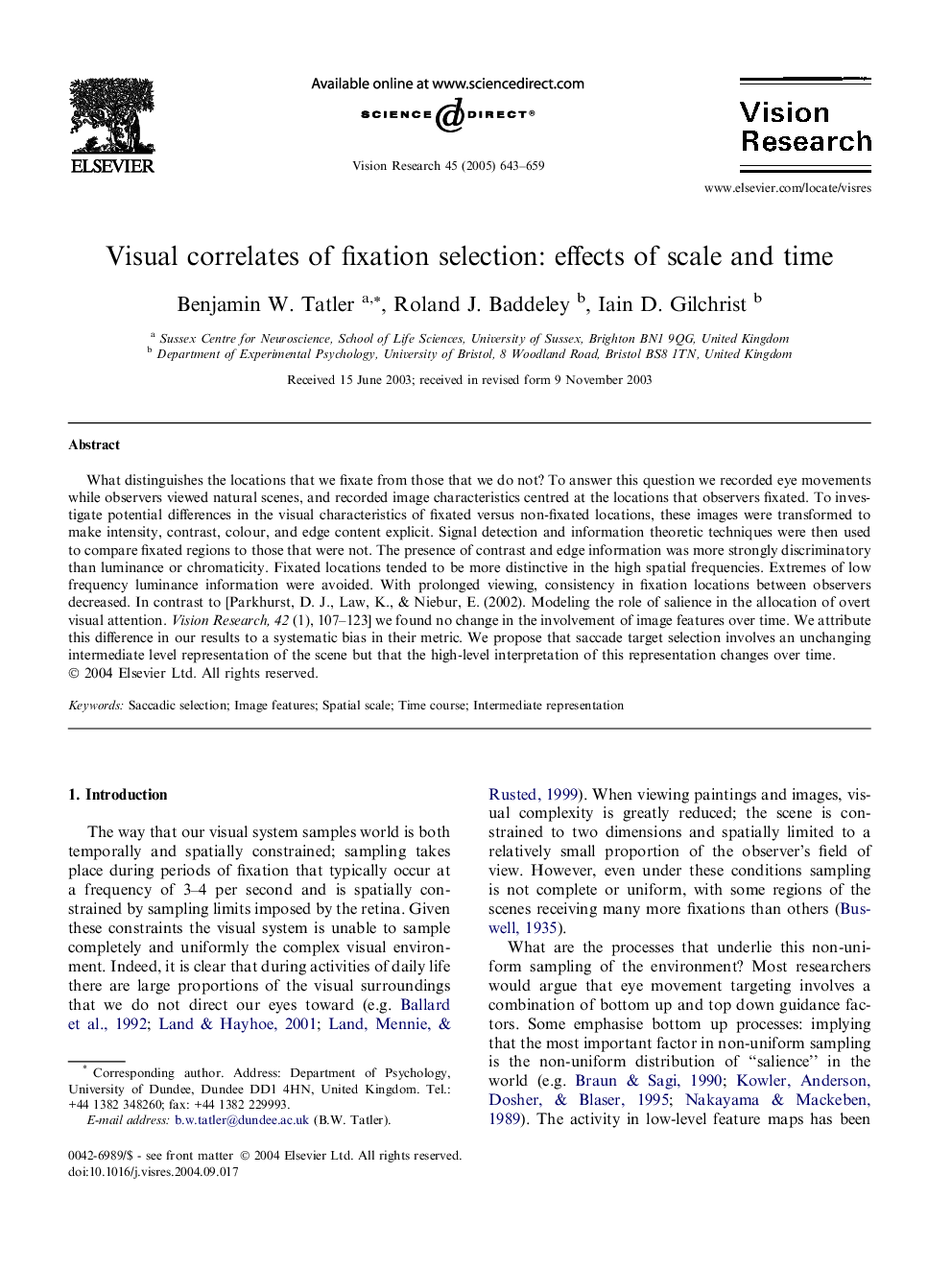| Article ID | Journal | Published Year | Pages | File Type |
|---|---|---|---|---|
| 9348528 | Vision Research | 2005 | 17 Pages |
Abstract
What distinguishes the locations that we fixate from those that we do not? To answer this question we recorded eye movements while observers viewed natural scenes, and recorded image characteristics centred at the locations that observers fixated. To investigate potential differences in the visual characteristics of fixated versus non-fixated locations, these images were transformed to make intensity, contrast, colour, and edge content explicit. Signal detection and information theoretic techniques were then used to compare fixated regions to those that were not. The presence of contrast and edge information was more strongly discriminatory than luminance or chromaticity. Fixated locations tended to be more distinctive in the high spatial frequencies. Extremes of low frequency luminance information were avoided. With prolonged viewing, consistency in fixation locations between observers decreased. In contrast to [Parkhurst, D. J., Law, K., & Niebur, E. (2002). Modeling the role of salience in the allocation of overt visual attention. Vision Research, 42 (1), 107-123] we found no change in the involvement of image features over time. We attribute this difference in our results to a systematic bias in their metric. We propose that saccade target selection involves an unchanging intermediate level representation of the scene but that the high-level interpretation of this representation changes over time.
Related Topics
Life Sciences
Neuroscience
Sensory Systems
Authors
Benjamin W. Tatler, Roland J. Baddeley, Iain D. Gilchrist,
